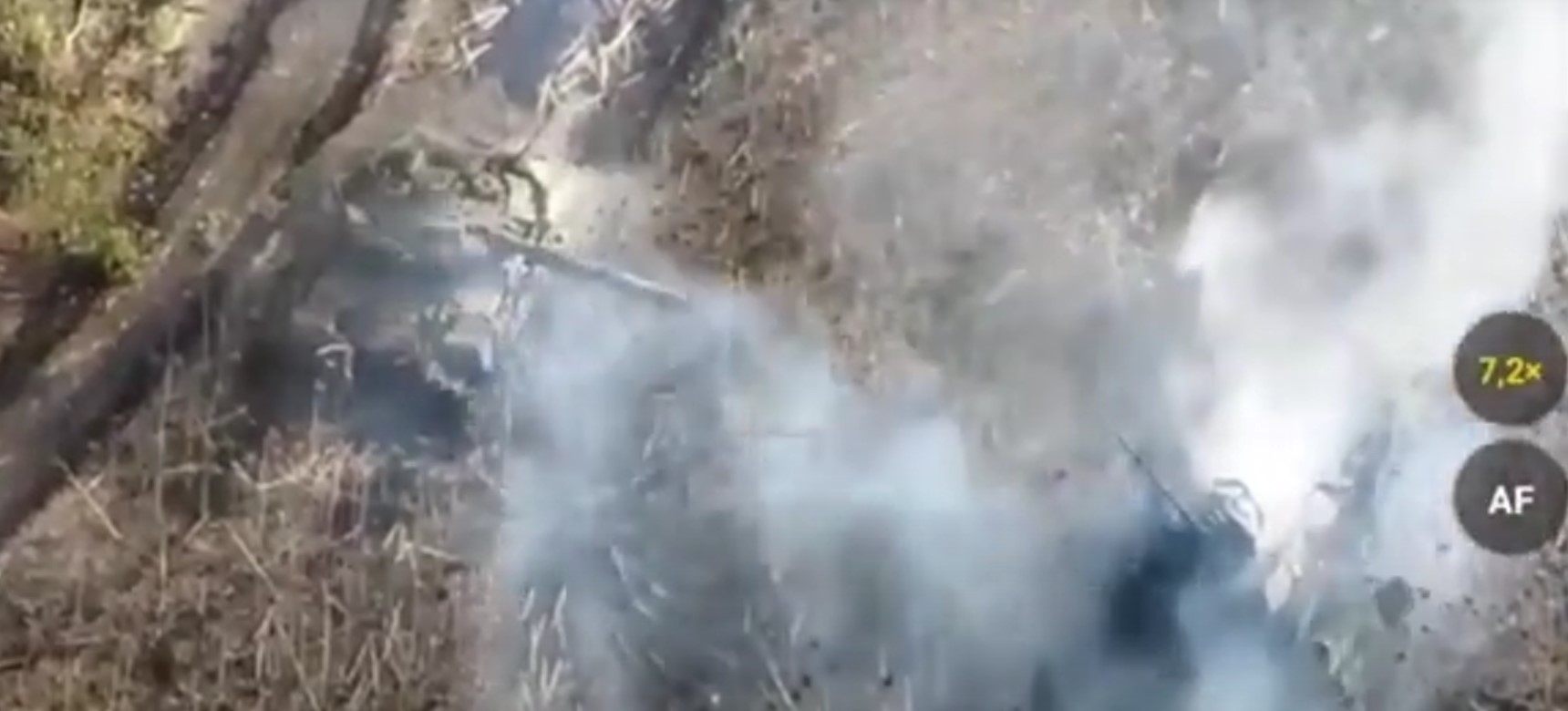A Russian APC drove close to Ukrainian tanks and was destroyed
16 October, 2024 Ukrainian T-64 next to the destroyed Russian BTR-82F. Photo credits: Butusov plus A Russian armored personnel carrier drove close to the tanks of the Armed Forces of Ukraine and was destroyed by fire from a 125mm gun.
Journalist Yurii Butusov published the video on his Telegram page. The shooting of the Russian BTR-82A armored personnel carrier took place in the Kursk region during the offensive of Ukrainian tanks. This episode was recorded by a reconnaissance drone adjusting the fire of T-64 tanks from the 17th Separate Tank Brigade of the Armed Forces of Ukraine.
After the first shot, the Russian armored personnel carrier stopped, and the crew of the combat vehicle started to chaotically flee in different directions. After the first shot and the enemy vehicle was disabled, the second tank fired a control shot, which caused the BTR-82A to catch fire and was completely destroyed.
It is not uncommon for Russian troops to leave their own positions in disorientation and move toward the positions of the Ukrainian Defense Forces. In addition, the Russians also demonstrate a lack of coordination in the rear, where engineering units do not report the formation of defense lines and the installation of anti-tank structures.
 Destruction of a Russian armored personnel carrier by fire from a 125mm gun.
Destruction of a Russian armored personnel carrier by fire from a 125mm gun.
Photo: Butusov PLUS
Militarnyi recently reported that the Russian military suffered losses due to the unorganized installation of "dragon's teeth" on public roads in the Kursk region. According to the Russian military, the installation of concrete anti-tank structures took place without authorization and on the road used for rotation and volunteer travel. Due to the hasty attempts to organize defensive lines and build fortifications, the Russians are doing so in a disorganized manner and do not inform adjacent units of their activities.
Some Russian military commanders are trying to shift the responsibility to the Ukrainian special services and present these incidents as sabotage.
Still, more than one unit of engineering equipment is needed to transport and even more so to install such units.